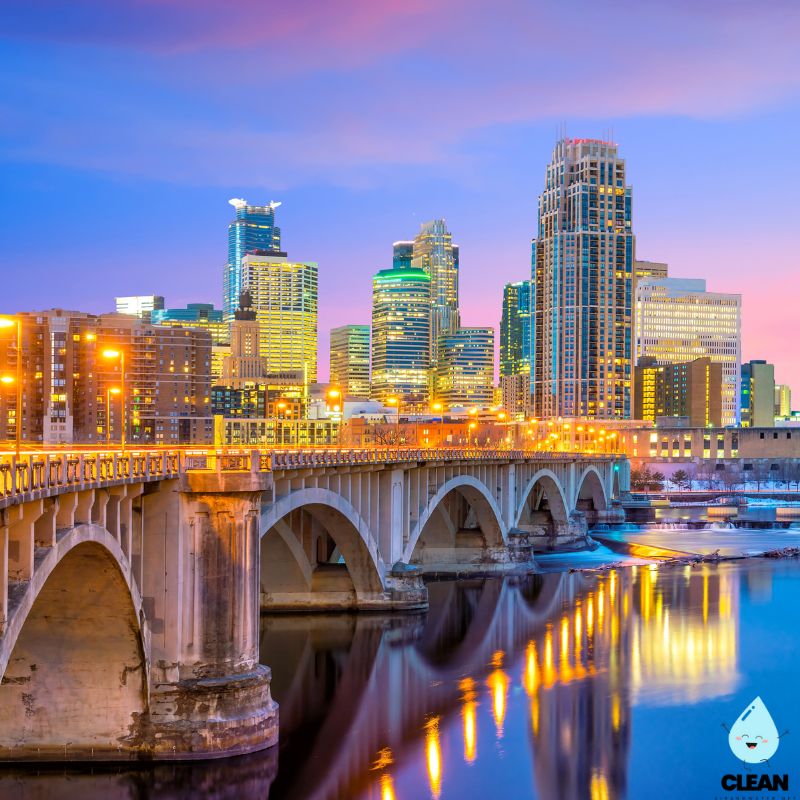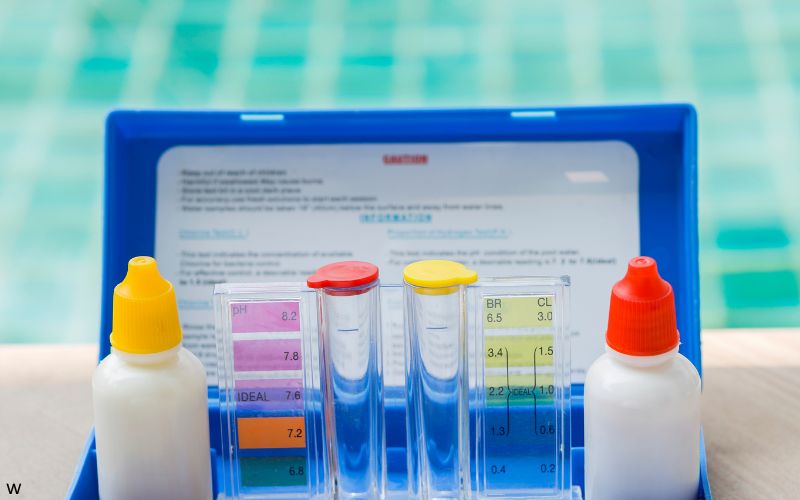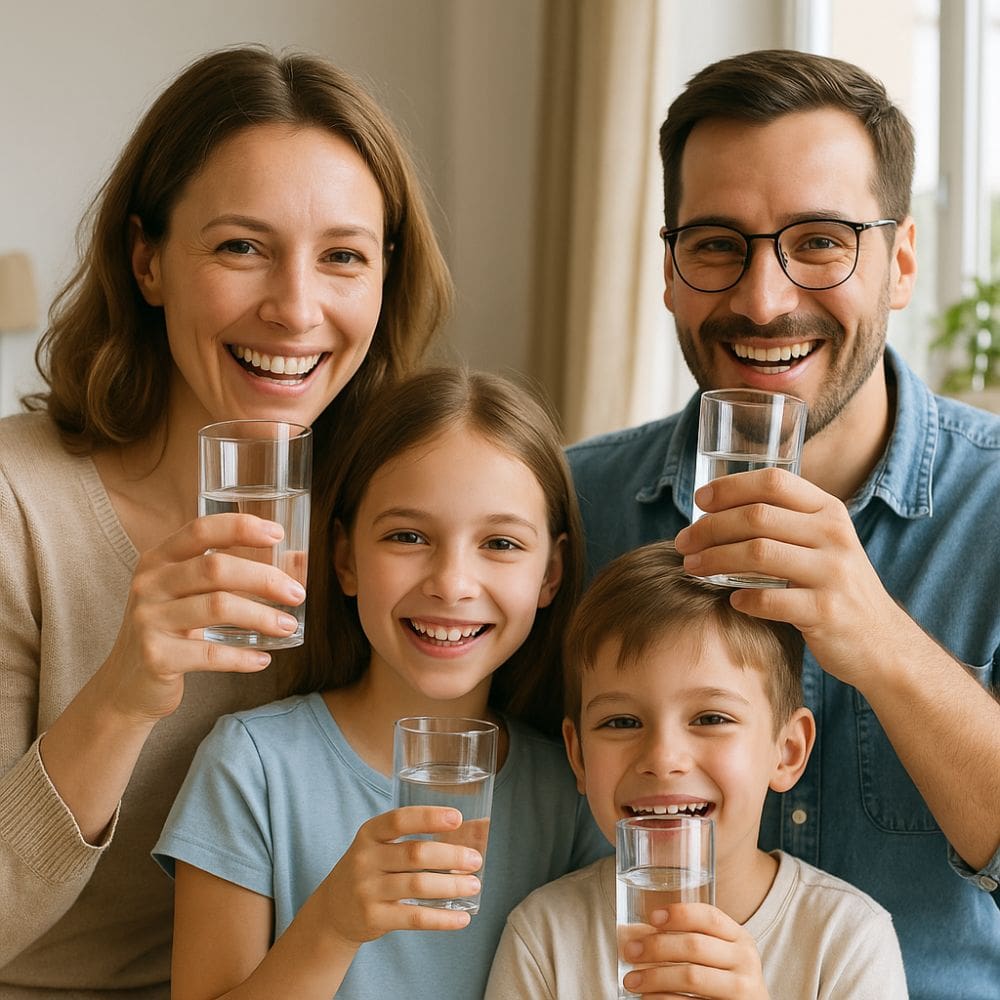Minneapolis-Minnesota Water Quality at a Glance
minimal concerns
Is Minneapolis Water Safe to Drink?
Yes, Generally Safe – Minneapolis water meets all federal safety standards and has minimal PFAS contamination with only one compound detected at extremely low levels. The city treats 57 million gallons daily from the Mississippi River with comprehensive monitoring. Main concerns are disinfection byproducts and chloramine taste, which are common in large municipal systems but remain within federal limits.
⚠️ Minor Concerns for Minneapolis Residents
- PFAS “Forever Chemicals”: Only PFBA detected at extremely low levels (far below MDH guidance value of 7,000 ppt)
- Disinfection Byproducts: HAA5 up to 29.7 ppb and TTHMs up to 29.2 ppb (within federal limits but above optimal levels)
- Chloramine Taste: City uses chloramine disinfection which causes “swimming pool taste” that doesn’t dissipate naturally
- Historical Lead Pipes: Some older service lines still contain lead, though city has active replacement program
Read the full report below for detailed analysis, testing data, and actionable recommendations for Minneapolis residents.
Minneapolis – Minnesota – Water Quality Report 2025: PFAS Testing, Infrastructure Concerns & Safety across your city
Minneapolis Water Treatment & Distribution Services, established in 1867, serves approximately 420,000 residents in Minneapolis and several surrounding suburban communities. The system includes approximately 1,000 miles of water mains, an advanced treatment facility utilizing ultrafiltration membrane technology, and multiple storage facilities, delivering an average of 57 million gallons daily to the greater Minneapolis area.
Minneapolis draws its drinking water exclusively from the Mississippi River, which provides a renewable but challenging source requiring advanced treatment. The city maintains comprehensive source water protection through partnerships with upstream communities and watershed organizations. Minneapolis water has consistently earned recognition for its quality, meeting all federal and state standards. The city has implemented aggressive lead service line identification and replacement programs while investing in cutting-edge treatment technologies to address emerging contaminants.

Minneapolis Water Quality: Current Status (2024-2025)
Latest Testing Results
- Lead Levels: The most recent testing period shows 90th percentile lead levels well below the EPA action level of 15 ppb, reflecting successful corrosion control treatment and ongoing lead service line replacement efforts.
- Testing Scope: Minneapolis conducts comprehensive water quality testing throughout the distribution system, with enhanced monitoring for emerging contaminants and PFAS compounds.
- Compliance Status: Minneapolis water meets or exceeds all federal and state drinking water standards, maintaining full compliance with EPA and Minnesota Department of Health regulations.
Mississippi River Source
- Surface Water Intake: Primary source (100% of supply) is the Mississippi River, with intake structures located upstream of the metropolitan area to minimize pollution and contamination.
- Source Water Quality: Subject to seasonal variations in turbidity, temperature, and organic content requiring adaptive treatment strategies throughout the year.
- Watershed Protection: Collaborative programs with upstream communities and agricultural interests have improved source water quality through runoff reduction and pollution prevention initiatives.
Advanced Treatment Technology
- Ultrafiltration Technology: The treatment facility utilizes ultrafiltration membrane technology to provide superior pathogen removal and water clarity compared to conventional treatment methods.
- Multi-Barrier Approach: Treatment process includes coagulation, sedimentation, membrane filtration, and chloramine disinfection to ensure comprehensive contaminant removal.
- Enhanced Contaminant Removal: Advanced treatment provides effective removal of organic compounds and emerging contaminants, reducing disinfection byproducts and addressing taste concerns.
Infrastructure Modernization
- Pipeline Replacement: Systematic replacement of aging water mains annually, prioritizing areas with cast iron pipes and infrastructure installed before 1940.
- Lead Service Line Program: Comprehensive inventory identifies lead service lines throughout the system, with ongoing replacement program to eliminate lead pipes from the distribution network.
- Digital Water Management: Implementation of real-time monitoring throughout the distribution system, allowing rapid response to water quality changes and potential contamination events.
Customer Protection Initiatives
Minneapolis provides extensive water quality resources including free lead testing kits, water efficiency assistance, and payment programs for low-income residents. The city’s Lead Service Line Replacement program offers cost-sharing options and complete replacement for qualified households. Educational initiatives include school outreach programs and multilingual water quality materials reflecting the city’s diverse population. Minneapolis has established an Environmental Justice Framework that prioritizes water infrastructure improvements in historically underserved communities while maintaining transparent, accessible reporting of water quality data. The city’s forward-thinking approach to water management combines technological innovation with community engagement to ensure safe, high-quality water for all residents.
Recommendations for Minneapolis Residents

Request Free Water Testing
Order a free water testing kit by calling 311 or visiting minneapolismn.gov/water. Testing is recommended for all homes built before 1986, especially those with original plumbing.

Check Lead Service Line Status
Verify if your home has a lead service line through the city’s resources or call 612-673-5600 to schedule a free inspection and learn about replacement assistance available through city programs.

Use Appropriate Filtration
If you have lead plumbing or are concerned about taste from chloramine disinfection, use NSF-certified filters (Standard 53 for lead removal). Eligible residents can receive assistance through city water quality programs.

Follow Smart Water Practices
Run cold water for 2-3 minutes after long periods of non-use (overnight, workday). Never use hot water directly from the tap for drinking, cooking, or infant formula as it can contain higher levels of metals from your plumbing.

Stay Informed
Sign up for water quality alerts through the Minneapolis Water Quality Notification System. Report water quality concerns immediately by calling the 24-hour water quality hotline at 612-673-2456.
Quality News About Your Water
Get the comprehensive water quality news coverage you need with our dedicated US Water News Service. From coast to coast, we deliver in-depth reporting and expert analysis on PFAS contamination, EPA regulatory changes, infrastructure developments, and emerging water safety issues affecting communities nationwide. While mainstream media only covers the biggest stories, we provide the detailed, ongoing coverage that helps you understand the full scope of America’s water challenges. Whether you’re a concerned citizen, water professional, or community leader, our daily updates and analytical insights keep you informed about the issues that matter most to public health and environmental safety.
Frequently Asked Questions
Is Minneapolis tap water safe to drink?
Yes, Minneapolis tap water consistently meets or exceeds all federal and state safety standards. The city uses a multi-barrier treatment approach including ultrafiltration membranes that provide superior removal of pathogens and contaminants.
The water treatment facility continuously monitors water quality with automated systems that can detect changes in source water and adjust treatment accordingly. Lead levels are well below the EPA action level. The city utilizes optimized corrosion control to minimize lead exposure from service lines and home plumbing.
Residents in homes built before 1986 should consider testing for lead as a precaution, as older plumbing fixtures may contain lead-based materials.
How do I know if my home has a lead service line?
Minneapolis has comprehensive information about service lines throughout the city. You can check your home’s status through:
1. Contact the city at 612-673-5600 to request service line information
2. Request an inspection through the city’s lead service line program
3. Examine your service line yourself – lead pipes are soft, dull gray in color, and will not attract a magnet
If you have a lead service line, you may qualify for the city’s replacement program which offers assistance based on eligibility. Homes built before 1930 are most likely to have lead service lines, though some were installed through the early 1950s in Minneapolis.
Why does Minneapolis use ultrafiltration treatment?
Minneapolis utilizes ultrafiltration membrane technology to address several water quality challenges unique to the Mississippi River source:
• Superior pathogen removal: Ultrafiltration membranes physically filter out Cryptosporidium, Giardia, and other pathogens that are resistant to chemical disinfection
• Handling source water variability: The Mississippi River experiences significant seasonal changes in turbidity, temperature, and organic content
• Reduced chemical usage: Physical filtration reduces the need for excessive chemical treatment, resulting in improved water quality
• Enhanced clarity: Membranes produce consistently clear water regardless of source water conditions
When combined with other treatment processes and chloramine disinfection, this multi-barrier approach addresses a wide range of contaminants including emerging concerns like PFAS compounds.
Are there water restrictions in Minneapolis?
Minneapolis maintains year-round water conservation measures and may implement additional restrictions during drought conditions:
Standard Conservation Measures:
• Water conservation programs and rebates for efficient fixtures
• Outdoor watering guidelines during peak demand periods
• Smart irrigation controller rebate program
Drought Response (when activated):
• Reduction in lawn watering days
• Prohibition of certain non-essential water uses
• Commercial use restrictions
Current water restrictions and conservation status are available at minneapolismn.gov/water or by calling 311. The Mississippi River’s abundant flow generally provides sufficient supply except during severe drought conditions.
Contaminants of Concern

Lead
Source: Lead service lines and older household plumbing; Minneapolis has lead service lines throughout the system with ongoing replacement efforts
Health Effects: Developmental delays in children, reduced IQ, learning difficulties, cardiovascular and kidney problems in adults
Current Levels: Lead levels are well below EPA action level through effective corrosion control EPA Limit: Action level 15 ppb, though no lead level is considered completely safe

PFAS (Per- and Polyfluoroalkyl Substances)
Source: Industrial discharges, firefighting foam, and consumer products that can contaminate surface water sources
Health Effects: Potential increased cholesterol levels, changes in liver enzymes, decreased vaccine response in children, increased risk of certain cancers with high exposure
Current Status: Minneapolis water shows minimal PFAS contamination with only one compound (PFBA) detected at extremely low levels, far below Minnesota Department of Health guidance values
Please read – our information
The information presented on cleanairandwater.net is compiled from official water quality reports, trusted news sources, government websites, and public health resources. While we strive for accuracy and thoroughness in our presentations, we are not scientists, engineers, or qualified water quality professionals.
Our mission is to present water quality information in an accessible, real-world format that helps people understand what’s in their water and make informed decisions about their health and safety. We believe that complex environmental information should be available to everyone in a format that’s easy to understand.
We make every effort to ensure our content is current and accurate, but we cannot guarantee that all information is complete or error-free. This website should not replace official communications from your local water utility or health department. We always recommend consulting official sources for the most up-to-date information regarding your specific water system.
Clean Air and Water is not liable for any unintentional errors, omissions, or outdated information. The content on this site is provided for informational purposes only and should not be considered professional advice.


